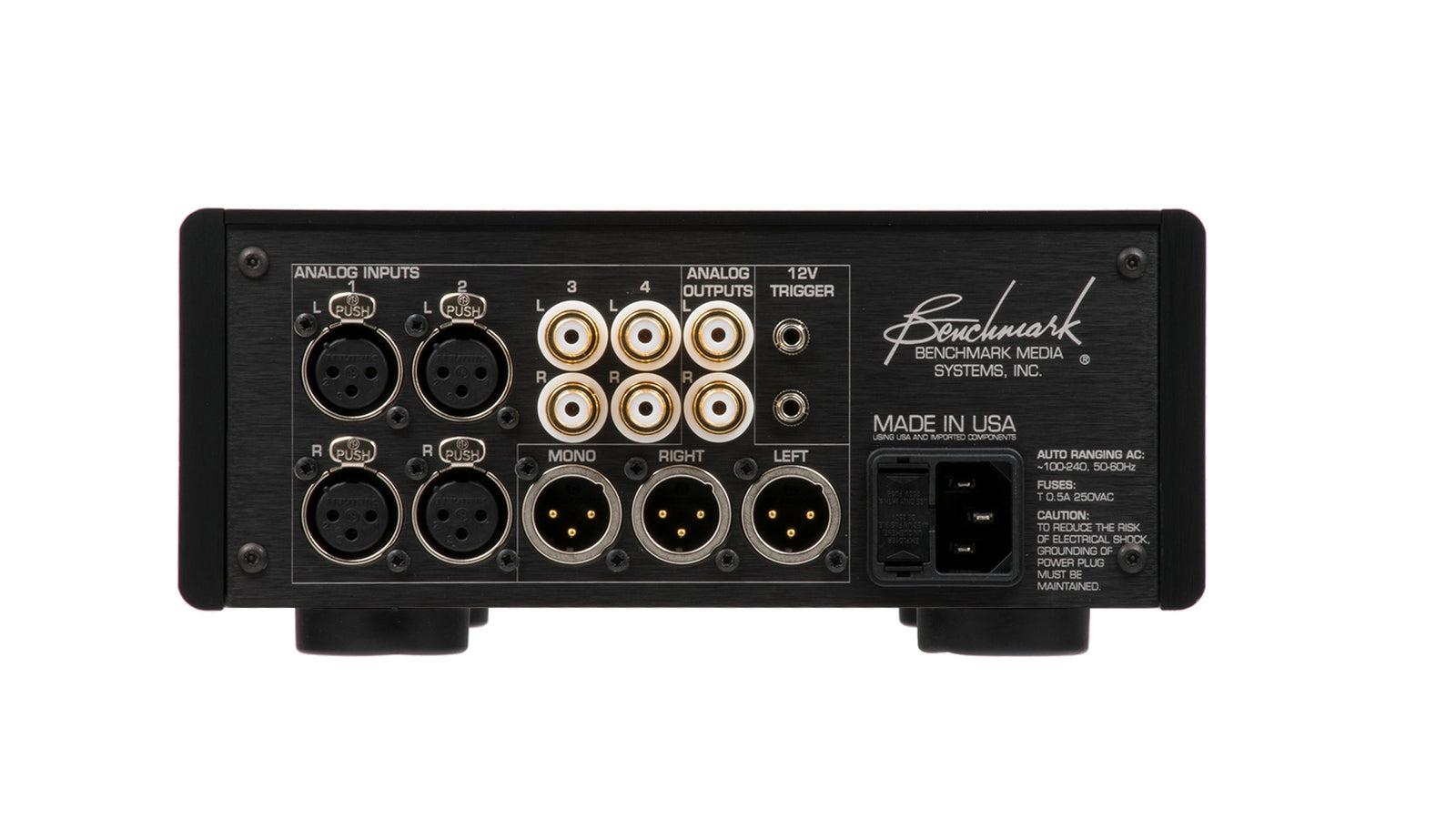Buy one component and save 10% on up to 2 cables. Buy 2 components and get 4 free cables. Free shipping on USA orders over $700. We are closed 12/25 and 12/26.
Buy one component and save 10% on up to 2 cables. Buy 2 components and get 4 free cables. Free shipping on USA orders over $700. We are closed 12/25 and 12/26.
Audio Application Notes
Balanced vs. Unbalanced Analog Interfaces
by John Siau April 23, 2018
If you look at the back of any Benchmark product, you will find balanced XLR analog-audio connectors. As a convenience, we also provide unbalanced RCA connectors on many of our products. In all cases, the balanced interfaces will provide better performance.
We build our unbalanced interfaces to the same high standards as our balanced interfaces, but the laws of physics dictate that the balanced interfaces will provide better noise performance.
This application note explains the advantages of balanced interfaces.
- John Siau
Relay-Controlled Volume - The Ultimate Solution for Analog Audio
by John Siau April 11, 2018
Benchmark has introduced a new analog-to-analog volume control circuit that features a 256-step relay-controlled attenuator and a 16-step relay-controlled boost amplifier. The volume control has a +15 dB to -122 dB range in 0.5 dB steps and is a key component in the HPA4 Headphone / Line Amplifier.
Our goal was to produce an analog-to-analog volume control with the highest achievable transparency. We wanted to be able to place this volume control in front of our AHB2 power amplifier or in front of our THX-888 headphone amplifier board without diminishing the performance of either device. Our volume control would need to have lower distortion and lower noise than either of these amplifiers. Given the extraordinary performance of these THX-AAA amplifiers, this would not be an easy task!
This application note discusses the engineering decisions that went into the development of this new analog volume control circuit. The end result is a fully buffered volume control with a signal-to-noise ratio that exceeds 135 dB. THD measures better than the -125 dB (0.00006%) limits of our test equipment.
- John Siau
Interpreting THD Measurements - Think dB not Percent!
by John Siau November 15, 2017
Distortion measurements (THD, THD+N and IMD) are traditionally expressed in terms of percent. But what do 1%, 0.1%, 0.01% or 0.001% mean in terms of loudness or audibility?
If you are like most people you just know that 0.001% is the best of the three numbers listed above. If you are a well-trained geek you will recognize that each added leading zero represents a 20 dB improvement. 0.01% is 20 dB lower than 0.1% and 40 dB lower than 1%. The well-trained geek will convert % to dB in order to give meaning to these numbers.
When THD is expressed in terms of dB, we can easily determine how loud the distortion will be in our playback system.
Will my audio electronics produce audible distortion?
Will the distortion produced by my audio electronics be inaudible?
- John Siau
Calculating the Performance of an Amplifier-Speaker Combination - Example 2
by John Siau October 27, 2017
Example 2 - PMC MB2S
In this application note we calculate the maximum output level and noise level produced by an amplifier/loudspeaker combination.
This application note can serve as an example for calculating the maximum sound pressure levels and noise output levels for any amplifier/speaker combination.
At the 143rd AES conference in NYC, we demonstrated two Benchmark AHB2 monoblock power amplifiers driving a pair of 4-Ohm PMC MB2S studio monitors.
We were extremely impressed by the unusually clean, distortion-free, output of these monitors. They fully compliment the distortion-free performance of the AHB2 to provide a system with outstanding clarity while delivering high sound pressure levels.
In this application note we will calculate the peak SPL produced by this system. We will also calculate the acoustic noise at a distance of 1 meter from each monitor. We will also discuss some of the unique design features of the MB2S monitors that contribute to their impressive performance.
- John Siau
Speaker Sensitivity and Amplifier Power
by John Siau April 27, 2017
Speaker sensitivity is a measure of how loud a speaker will play at a given input power or at a given input voltage. Sensitivity is normally measured with a 1 watt power input or a 2.83 Vrms voltage input.
There have been many different speaker designs over the years and there are vast differences in speaker sensitivity. The speakers below have sensitivities ranging from about 85 dB to 109 dB.
- What are the power requirements?
- What are the implications for system noise?
- How loud will each play?
- Do they require different amplifiers?
- John Siau








